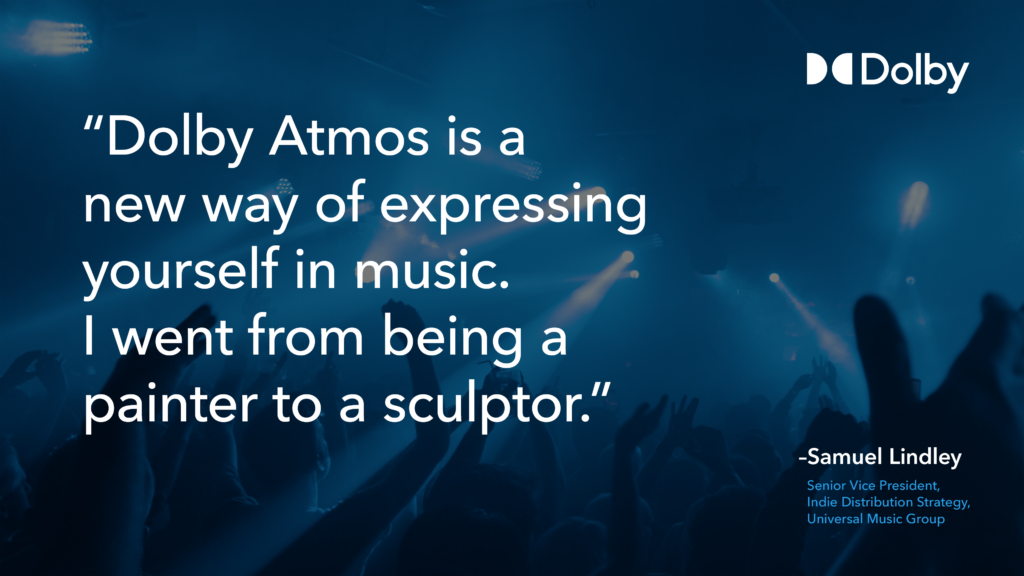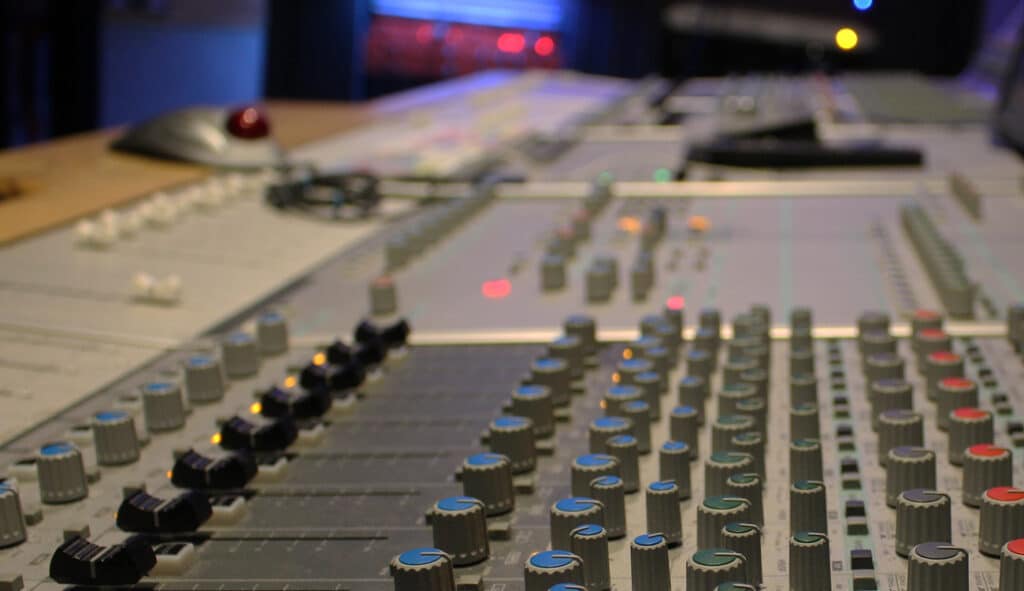As a leading provider of audio mixing and mastering services, we are proud to announce the addition of Dolby Atmos mixing and mastering to our portfolio of offerings. This cutting-edge technology allows us to take your stereo and mono stems and elevate them to new heights, creating a fully immersive, three-dimensional sound experience.
Our audio engineers, with vast experience in Dolby Atmos technology, will use the latest tools and techniques to craft a soundscape that genuinely immerses the listener. Dolby Atmos mixing and mastering will bring your audio to life like never before.
The key to the Dolby Atmos mixing and mastering process is using metadata to describe the audio objects and their position in the three-dimensional space. This allows precise control over the audio elements, resulting in a truly immersive listening experience. Our engineers will work closely with you to understand your project’s unique needs and tailor the mix accordingly.
Why Dolby Atmos, and what’s the big difference between Stereo and 3D Audio?
Two main factors make all difference with Dolby Atmos:
OBI (Object Based Immersive) and Head Tracking
Dolby developed the OBI to avoid an unnecessary increase in channel counts. An object, in theory, represents an audio channel. Rather than being limited to a single channel, the object can be created anywhere in 3D space at specific X, Y, and Z coordinates. The channel and its positional data are encoded as metadata and delivered from the production environment to the Dolby Atmos decoder in the consumer playback environment.
The decoder handles the information to determine where the audio should be positioned in space, employing an algorithm to optimally route the audio to the available output channels that feed the correct speakers in each context.
Object-based audio refers to the practice of applying distinct objects to represent particular sounds in the mix.
Head tracking is essential to binaural audio and Dolby Atmos when streamed via Apple Music.
Our brain automatically moves our head slightly to localise sound better. Therefore, head tracking is not just helpful in enhancing the live concert experience but also for spatial localisation in general. Once consumers grasp the full potential of head-tracking and spatial audio, they will realise that it is not only essential when watching movies with a visual reference point, but it may also enhance the music-listening experience. Current research and development efforts in this field are intensive.
In daily life, three-dimensional sound experiences are common. Humans’ ability to make sense of their surroundings and interact with them relies greatly on spatial awareness, and hearing plays a crucial role in this process. Natural noises are perceived based on their location and, less consciously, their magnitude; most people rely more strongly on their visual sense for this information.
Sound source localisation is paramount for the comfort of life, determining the position of a sound source in 3 dimensions: azimuth, height, and distance. It is based on 3 types of cues: 2 binaural (inter-aural time difference and inter-aural level difference) and 1 monaural spectral cue (head-related transfer function)
Dolby Atmos technology provide a virtual and realistic earing experience of the mentioned above.
Let’s explore the world of Spatial audio! But hold on! What exactly do you mean by Spatial Audio, you may wonder? Are you referring to Immersive Audio, 3D Sound, Surround Sound, Binaural, Auro-3D, Dolby Atmos 360-sound, or something else? Yes, to a point. In general, we are discussing anything related to sound other than stereo, which is not a novel concept in and of itself. However, with major platforms like Apple, Facebook and YouTube fully implementing Spatial Audio technology, it’s more relevant than ever before and possibly the most relevant event for music fans and immersive audio creators.
Dolby Laboratories introduced Dolby Atmos in 2012, with Disney’s Brave being the first film to be mixed in Dolby Atmos. Dolby Atmos is ten years old and was initially created for film, not music; this explains the difficulties encountered while combining music in Dolby Atmos. Beginning in the 1900s, sound recordings and reproductions were mono, with a single source from which sound was delivered. In the 1930s, stereophonic recordings used two speakers to produce a one-dimensional sound field. Furthermore, with the development of surround sound, the one-dimensional sound reproduction was stretched to a two-dimensional sound field by installing additional speakers surrounding the listener. Although Ray Dolby is credited with inventing surround sound in the 1970s, there were earlier trials, such as in the Disney film Fantasia in the 1940s.
The following evolutionary stage was the transition from a two-dimensional to a three-dimensional sound field—this is the origin of the complex term 3D audio; in addition to all the speakers surrounding the listener, thus, the name surround sound (like 5.1), there are extra speakers above the listener. This means the listener is immersed in sound coming from all directions, hence the phrase immersive audio
There was a different pace in the evolution of sound reproduction between movies and music. Film sound was very straightforward; the first sound in movies started in the 1920s as mono; then, in the 1930s came stereo sound experiments (Rapoport, 2015), and in the late 70s, the early surround sound formats were mainly developed by Dolby.
Over the years, many films, TV episodes, and broadcasts have been made in surround sound. However, there was a discrepancy between the advancements made in developing sound reproduction for film and music.
Over the years, virtually every film, television programme, and broadcast has been combined in surround. The transition to immersive sound began in 2011 with the release of Auro-3D, followed by the dominating Dolby Atmos format in 2012; Dolby Atmos was initially created and introduced for cinematic sound. Recorded sound without image (only music recordings) began in the late 1800s, initially in mono, followed by the introduction of stereo in 1930, which was wildly successful first with vinyl, subsequently cassette tapes, then CDs, and now digital audio files distribution and streaming.
Dolby released Dolby Atmos music in 2019, the first step into immersive sound for commercial music formats, but what happened in the interim? How was the significant surround era in music recording?
It was a considerable gap; music had been largely confined to stereo since the 1930s, at least for commercial music creation. The failure of quadraphonic in the 1970s and the defeat of DVD audio from 2000 to 2007 showed that the mass consumer public was not interested in anything other than stereo when listening to music.
The new terminology is always associated with new technologies. Although the terminology is supposed to make life easier by using particular words with agreed-upon meanings, those terminologies frequently decay. A term might imply different things depending on whom you ask.
Here are some sound reproduction examples: The term ‘immersive audio’ refers to sound systems that replicate a three-dimensional sound field. As a result, the terms 3D audio and 360 audio have the same meaning. Unfortunately, some individuals use the term surround to denote immersive audio, which can be confusing when distinguishing between known two-dimensional sound formats, like quad, 5.1, or 7.1 and immersive three-dimensional sound formats. There are also numerous more terms that are connected to immersive sound, such as Ambisonics, Auro-3D, 360 sound, 360 reality audio and Dolby Atmos.


£ 0.00